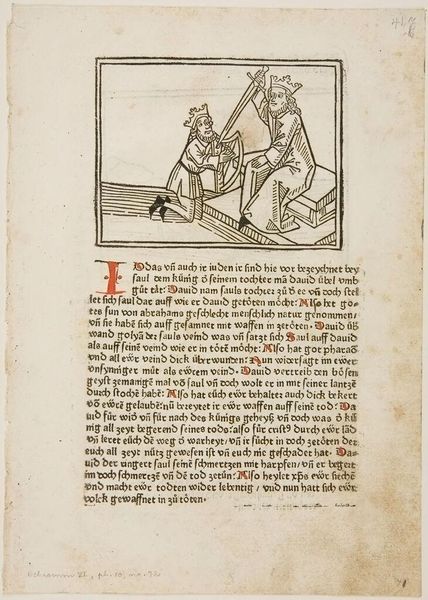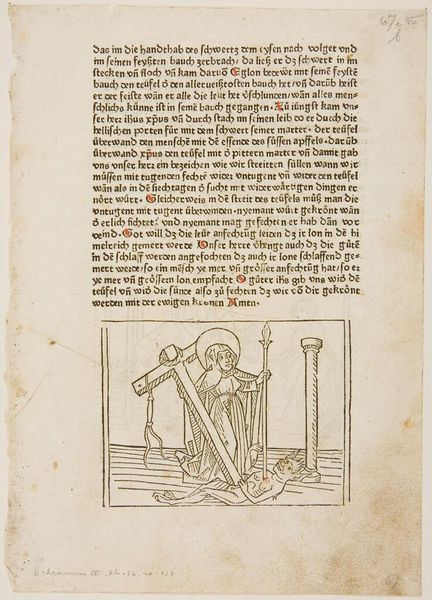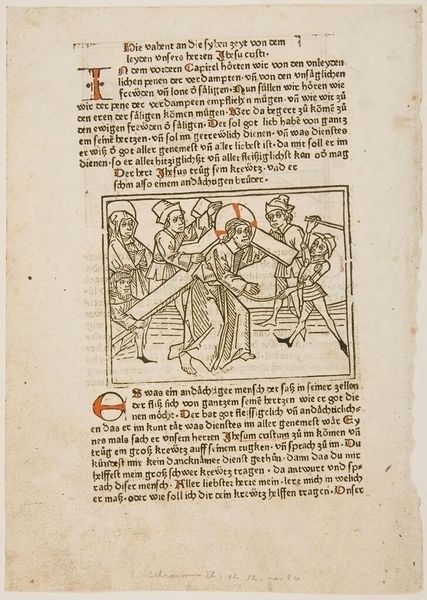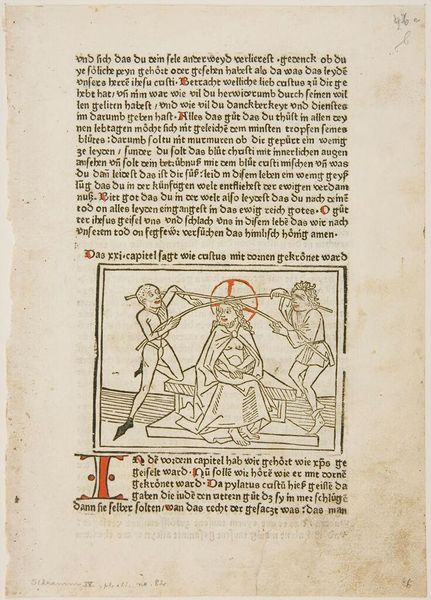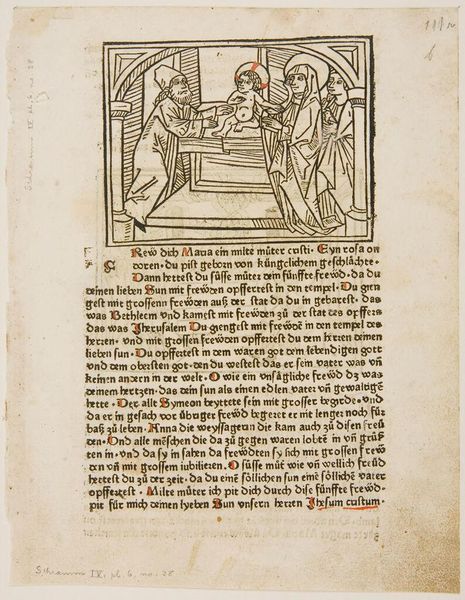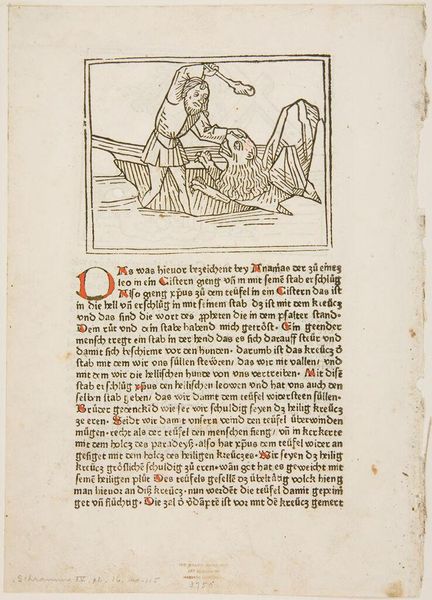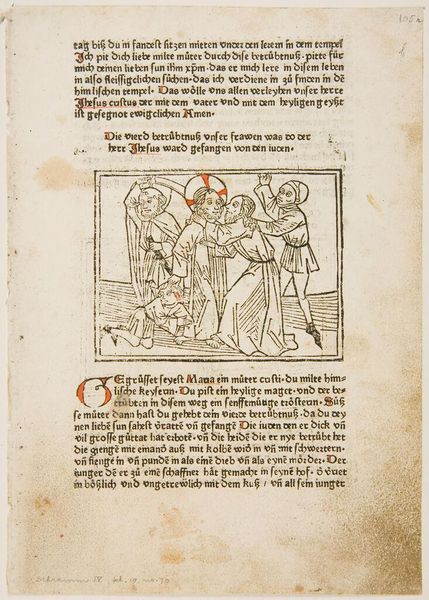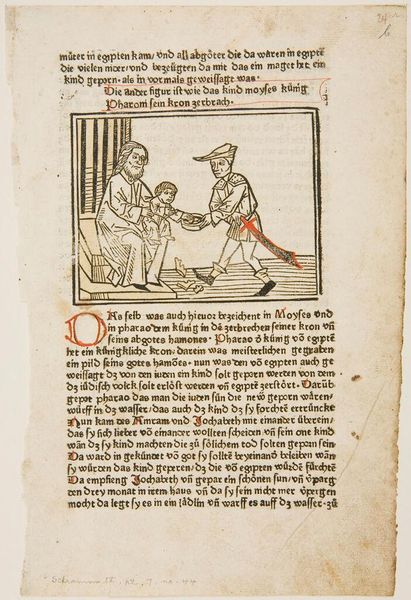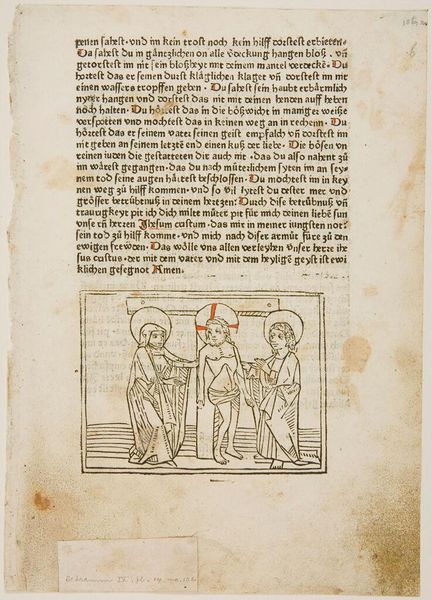
Copyright: CC0 1.0
Editor: This woodcut, titled "Visitation; verso: Nativity," by an anonymous artist, presents a really fascinating, almost folksy take on a familiar scene. I'm struck by the simple lines and the density of text surrounding the image. How do you interpret this work? Curator: Considering the context of religious imagery in the late medieval period, this piece would have been circulated broadly, perhaps as a devotional aid. The text, likely a prayer or meditation, enhances the image's power, prompting reflection. Notice how the composition directs the eye, making the viewer an active participant in the scene. Who was this intended for? Editor: Perhaps for personal devotion? Someone who wasn't wealthy enough for a large painting? Curator: Precisely. The image serves as a focal point for prayer, making religious concepts accessible beyond the church walls. The politics of imagery here highlights how religious ideas permeated daily life through accessible formats. Editor: I never considered how accessible religious art could be a form of empowerment. Curator: Indeed. These prints were instruments of devotion and vehicles of socio-religious ideas.
Comments
No comments
Be the first to comment and join the conversation on the ultimate creative platform.
